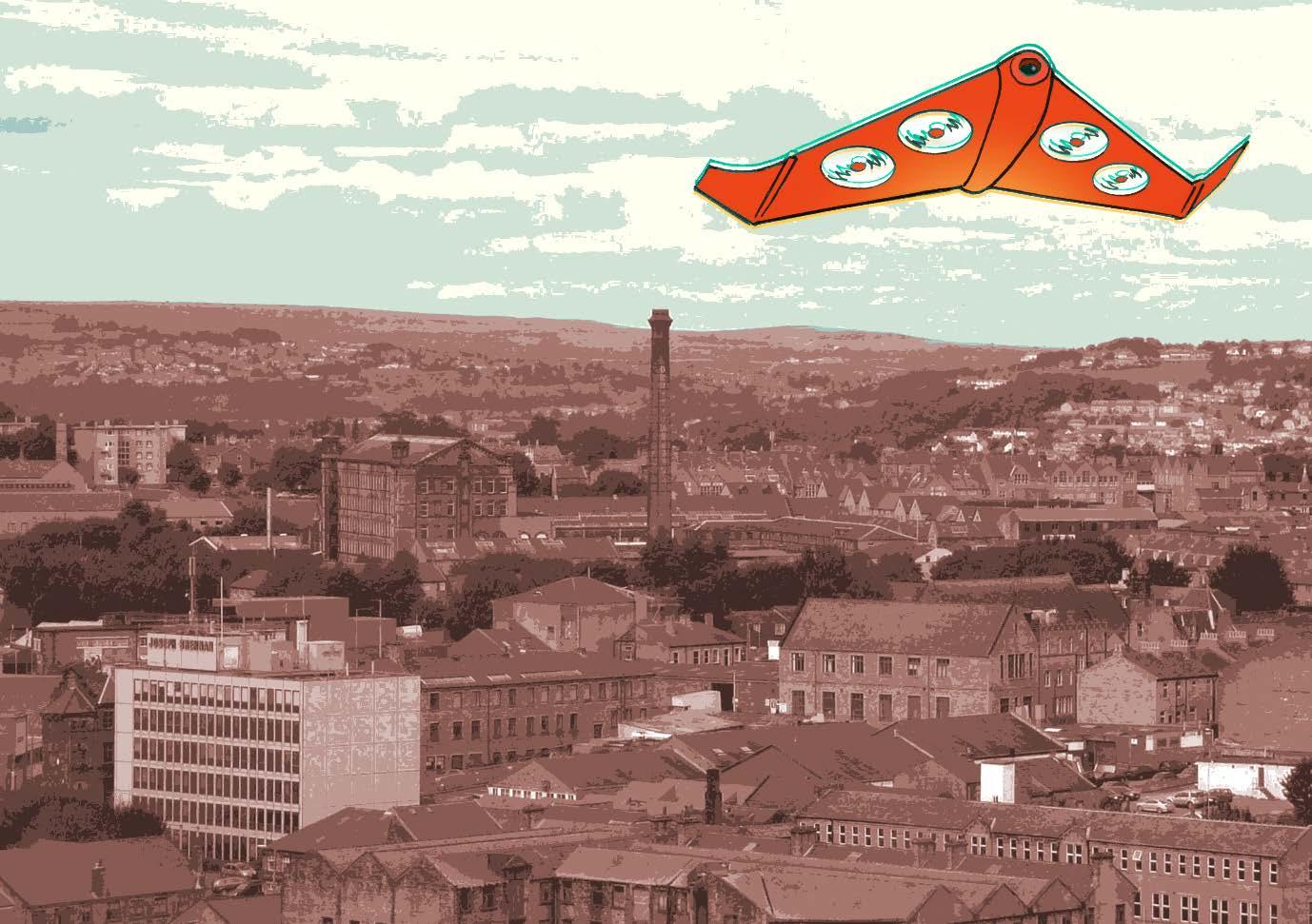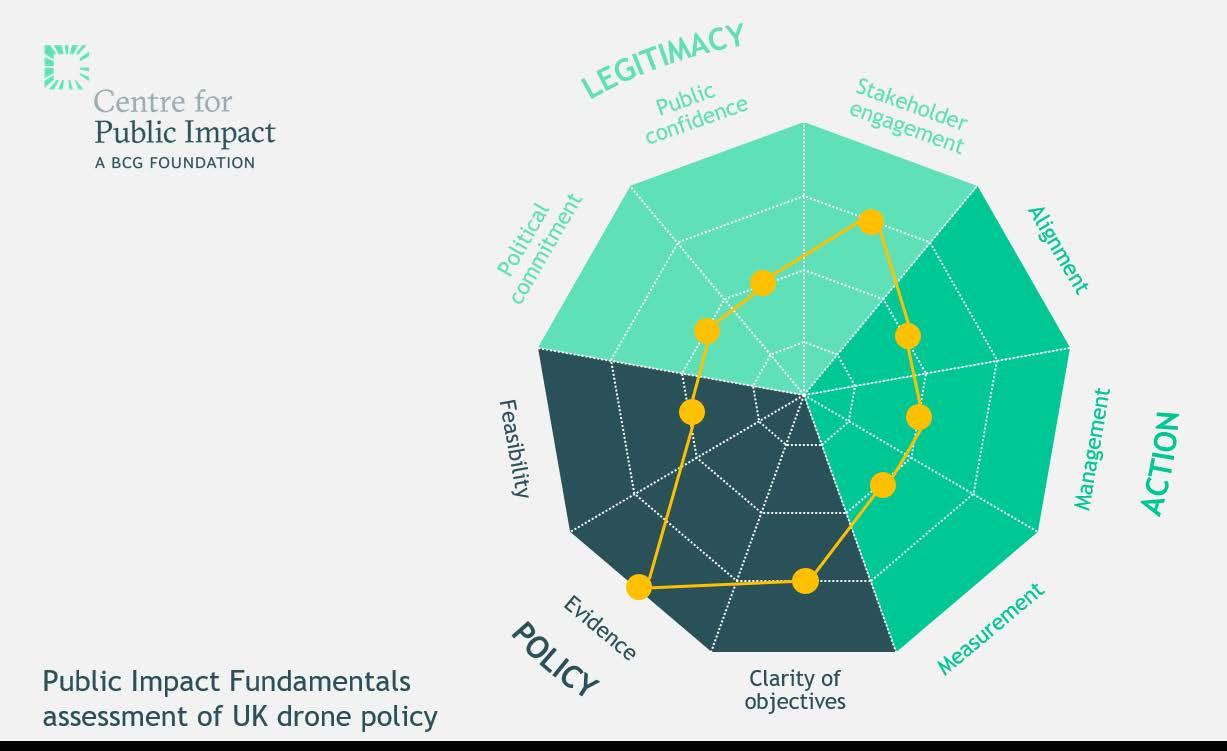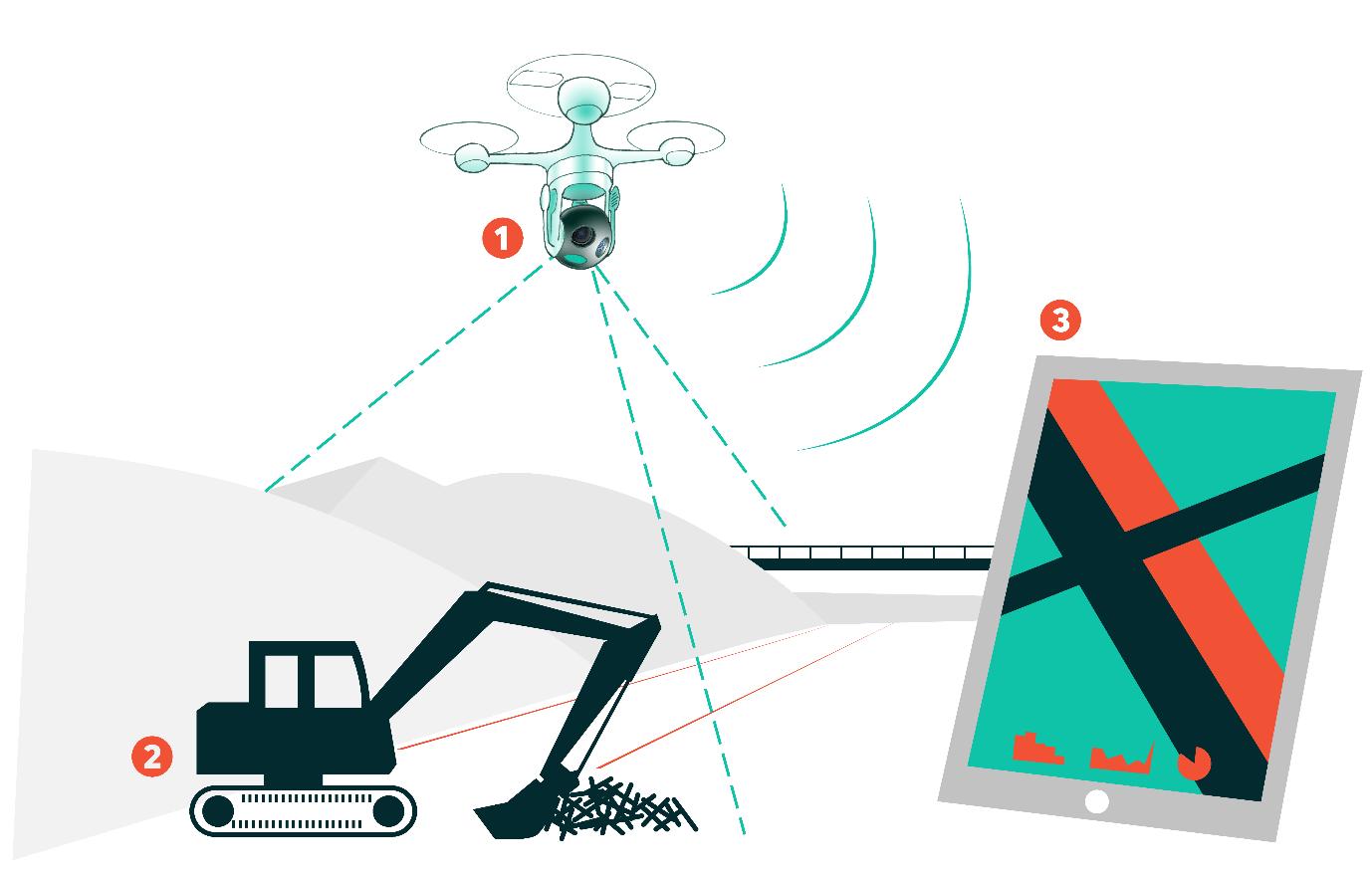
2 minute read
Supporting the fire and rescue service in Bradford
Using drones as a rapid response to fires
• Fast observation drones can reach the scene quicker than the emergency services • Emergency services can get aerial imagery of the scene and improve their response • Drone imagery can also be used to manage and inform firefighters’ response to the fire’s evolution in real time • We find this use case is both technically and economically feasible This use case focuses on emergency response drones for West Yorkshire Fire and Rescue service. Drones would provide high-quality information to support mission planners and controllers to direct resources when the alarm has been raised, arriving on the scene faster than is currently possible and helping staff plan an appropriate response for the seriousness of the incident.
A fire is detected (1) and the drone (2) rapidly gets eyes on the scene. It feeds back live information such as video and thermal imaging (3) to incident controllers and firefighters.
78
Drones would provide real-time information to firefighters working at the site of an incident, giving early warning of structural problems, identifying hotspots or individuals in need of help. They could also help map out high-risk sites.
The key benefits to drones for fire and rescue in Bradford would be:
• Time savings, in particular around avoiding staff time being spent on false alarms. • Cost savings, by avoiding the need for helicopters and by reducing resources spent unnecessarily on false alarms or small fires. • Improved safety for firefighters and for members of the public caught up in fires. In order to better understand the feasibility of this use case, we have focused on how a drone service centred on Bradford Fire Station. As with the West Midlands, we’ve looked into a two-drone service that gets rapid eyes on the scene, followed by high-resolution imagery.
The technology required for this use case is very similar to our proposed traffic incident response service in the West Midlands, and hence the challenges are similar. Safe operation across a whole city is critical and needs communications and traffic management infrastructure that is not currently in place; particularly if operating in the half of the city which is within Leeds-Bradford Airport’s controlled airspace.
To be feasible, regulations around operation in built-up areas would need to either be relaxed, or a specific exemption for these operations would need to be granted.
Our economic analysis suggests that such a service would be highly feasible: the cost savings it brings about for the fire and rescue service would pay for themselves within four years and deliver a net cost saving thereafter.
79

Artist’s impression of a fire service drone over Bradford. Credit: ILYA (Background image by Tim Green, CC-BY-SA)
This is a summary of the full technical and economic analysis paper, which can be read in the appendices.
80









